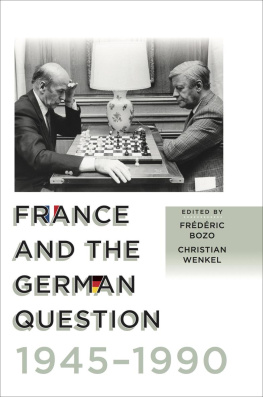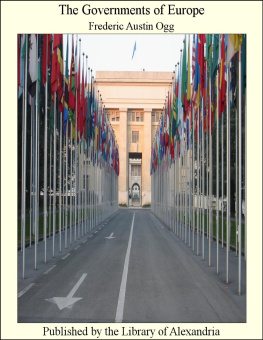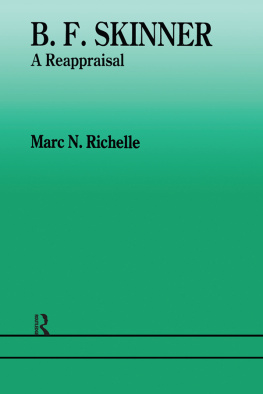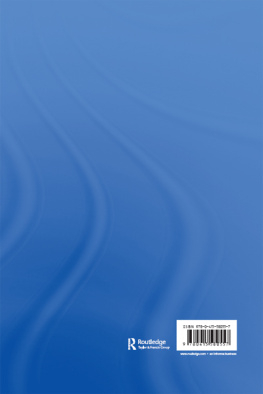Copyright
Collection
Le droit fil
edited by
Dominique Holtzer Costedoat
ALSO PUBLISHED
under the direction of Professeur Alain Pietrancosta
E. Bnard, E. Boursican, J. L. Champy, F. Lalance,
M. Lallemand, D. Lamarche, A. Marraud des Grottes, E. Ringeval,
P. Tardivy, H. Touraine
La loi Sapin II prise aux mots
transparence - anticorruption - modernisation
under the direction of Professeur Alain Pietrancosta
A. Marraud des Grottes, . Boursican, H. Kensicher,
A. de Feydeau, M. Lallemand, C. Mou Si Yan
Le droit des contrats rform
followed by
Table de concordance
(2 volumes)
. Boursican, A. Marraud des Grottes
Le droit des contrats rform
Lessentiel des points-cls
(bilingual French / English)
2017, Fauves ditions
9, rue de lcole-Polytechnique 75005 Paris
www.fauves-ditions.fr
EAN Epub : 979-10-302-1205-1
Note to the reader
The new French anticorruption law on transparency, fight against corruption and the modernisation of the economy (Sapin II) will bring Frances anticorruption laws into the 21st century and align them with the toughest international standards. The introduction of the bill follows a year of intense parliamentary debates, it promises to bring significant changes in French domestic law and imposes new obligations on large French and foreign businesses.
Sapin II clearly follows an international trend towards tougher and more transparent anticorruption laws and sets out a number of provisions and legal observations that have been influenced by other anticorruption standards such as the US Foreign Corrupt Practices Act (FCPA) and the UK Bribery Act. Those familiar with these two regulations who have followed their respective evolution and implementation will not be surprised to see that Sapin II Law introduces three new major innovations to effectively combat corruption.
An Anticorruption Agency
A dedicated regulatory authority entrusted with adequate powers of enforcement is a key factor in the global fight against corruption.
The US which has stood alone for long time in this fight provides a good illustration. It is no coincidence that Presidents George W. Bush and Barack Obama built on President Clintons legacy by adding dedicated FCPA personnel to the Department of Justice (DOJ), the Securities and Exchange Commission (SEC), and the Federal Bureau of Investigation (FBI). FCPA enforcement correspondingly increased in this new era of globalisation and concern for the damaging effects of corruption on development, good governance and international stability. In 2016, the last full year of the Obama administration, the DOJ and SEC brought a combined 56 FCPA enforcement actions with total imposed monetary sanctions of over $2.5 billion.
The UK Bribery Act of 2010 has followed up on this practice by giving enforcement powers to the Serious Fraud Office (SFO). After a slow start, the SFO has responded by stepping up its activities with a series of high-profile prosecutions, demonstrating its ability and commitment to hit companies where it hurts, both financially and reputationally.
In order to close the gap in the fight against corruption, France had to introduce a dedicated Anticorruption Agency. To illustrate the top priority nature of this new instrument, the creation of such an Agency is provided for in article 1 of Sapin II. Working under the authority of the justice and finance ministries, its mission will be to assist relevant authorities and exposed persons in preventing and detecting acts of corruption, influence peddling, misappropriation of public funds, unlawful taking of interest, misuse of public funds and favouritism . The Agency will be granted a budget of 10 to 15 million and employ around 70 agents.
The framework is set for the French Anticorruption Agency to follow the path of its US and UK equivalents.
Clear Emphasis on Prevention of Corruption within large companies
Prevention of corruption has been identified by the OECD as one of the key anticorruption factors.
France has taken this finding literally by introducing an innovative duty to prevent and detect corruption on companies and legal representatives of companies employing at least five hundred employees, or belonging to a group of companies whose parent company has its registered office in France and employs at least five hundred employees, and whose turnover or consolidated turnover exceeds 100 million . In practice, targeted companies will have to implement an internal anticorruption program comprised of 8 measures detailed in the Sapin II.
Failure to implement such an anticorruption program will be sanctioned by financial penalties up to 200,000 for individuals and 1 million for legal entities. These sanctions may be enforced regardless of whether any corruption offence has been committed which constitutes a major breakthrough on the subject and symbolizes Frances willingness to effectively combat corruption.
The UK Bribery Act clearly paved the way of this mechanism by introducing a new corporate offence of a failure to prevent bribery.
Indeed, pursuant to Section 7 of the UK Bribery Act, a commercial organisation is guilty of an offence if a person associated with such organisation bribes another person intending to obtain or retain (i) business for such organisation or (ii) an advantage in the conduct of business for such organisation.
The only defence to the Section 7 offence is for the commercial organisation to prove that it had in place adequate procedures designed to prevent those associated with it from engaging in bribery.
With France now having taken a step further by introducing a duty to prevent corruption, the international race to the top in the fight against corruption is in full swing.
The Deferred Prosecution Agreement
FCPA actions rarely go to trial. Companies facing the prospect of criminal or civil charges generally resolve FCPA investigations by means of negotiated settlements with the DOJ and/or SEC by entering either Non-Prosecution Agreements (NPA), Deferred Prosecution Agreements (DPA), or Declinations with or without disgorgement (Declination).
Schedule 17 to the UKs Crime and Courts Act 2013 (CCA 2013) built on these settlement mechanisms by introducing a UK-style DPA. Since then, the SFO concluded its third DPA with Rolls-Royce plc, resulting in fines and penalties totalling 497 million (plus interest and costs). This came on top of fines and other penalties totalling approximately US$32.2 million (plus costs) and 6.5 million under previously concluded DPAs.
Directly inspired from these mechanism, the Sapin II introduces a Convention judiciaire dintrt public , a French-style DPA which may now be offered by prosecuting authorities to legal entities accused of bribery or influence peddling.














